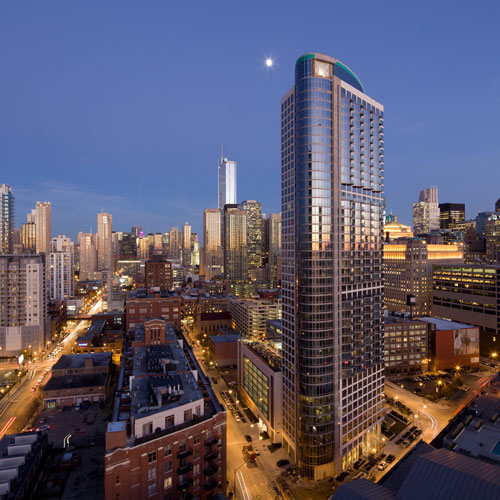Florida, with its year-round sunshine and plentiful recreation options, has long been a draw for Americans seeking a better quality of life—but now a small town near Naples is taking it a step further, offering what might be described as paradise on earth.
The community of Ave Maria, located in a remote part of Collier County, was first conceived in the early 2000s when philanthropist Tom Monaghan, the founder of Domino’s Pizza, met Paul J. Marinelli, the CEO of Barron Collier Companies, the largest landowner in South Florida. The morning of Barron Collier’s 2002 annual meeting, which was held in conjunction with the annual meeting of Minnesota-based Opus Corporation (a development partner), a newspaper article came out about Monaghan’s desire to find a large piece of property in Naples for a private Catholic university he was founding. Zoning laws wouldn’t allow him to build near Domino’s headquarters in Ann Arbor, Michigan, so he was looking south. As it turned out, Opus founder Jerry Roundhurst served with Monaghan on the Papal Foundation, a Catholic philanthropy organization, and he facilitated a meeting with Marinelli. Soon, Marinelli was on the phone with Monaghan, and a deal was born. “We agreed, over time, to donate 750 acres of land to Ave Maria University and build a town around it,” says Blake Gable, president of Barron Collier.

The seemingly large contribution was actually a drop in the bucket for the company, which has been developing land in Florida for more than 100 years—including the Grey Oaks community and massive retail sites in Hawksridge, Mercato, and Granada—and currently owns 80,000 acres of undeveloped land in the state. And, the Ave Maria University project also gave Barron Collier a community around which it could build. “Tom Monaghan was spending hundreds of millions of dollars to get a 6,000-student university off the ground, and it would come with a need for infrastructure, from grocery stores to homes,” Gable says. “That gave us the opportunity to launch the first large development in the eastern part of Naples.”
The regulatory process took years, but the 5,032-acre community, called Ave Maria, eventually opened in June 2007. Ave Maria University held its first class on its new campus that August.
From the beginning, the community was carefully planned. “We wanted it to be a place where all the amenities needed were nearby, where neighbors know neighbors, where kids are free to ride their bikes to school,” Gable says. “So, we spent a lot of time applying the best of what we saw in other master-planned communities to our location.”
The community currently features a European-inspired town center called La Piazza; 70 luxury condominiums located on the second and third floors of surrounding buildings; a $24 million church, whose oratory was reportedly sketched out on a tablecloth by Monaghan, an architecture enthusiast; 750 homes; 2 million square feet of retail space; a parochial K–12 school as well as public elementary and middle schools; a full complement of recreational amenities, including a water park, ball fields, fitness centers, a golf course, a tennis complex, and bocce courts; and all the infrastructure support (fire department, sheriff’s department, and EMS) a growing town needs. “We spent a lot of time focusing on employment opportunities in that part of the county so [that] people could live close to work,” Gable says. “It’s when you have jobs, education, and recreation that a community really comes together.”
In addition, the plan for the community set aside 17,000 acres of land for environmental protection, which was necessary, Gable says, after the explosive growth South Florida experienced in the 1990s. In 1999, Barron Collier, along with a handful of other large landowners in the eastern part of Collier County, put a moratorium on all new growth until it could create a development plan that would be approved by environmentalists, regulators, landowners, and the business community.


The result was similar to the Transfer of Development Rights (TDR) program, only better. TDR typically seeks to preserve landowners’ asset value by moving the right to build from a location where development is prohibited to a location where development is encouraged; the program developed by Barron Collier and the other landowners, called the Collier County Rural Lands Stewardship Area (RLSA), is an incentive-based program that gives credits to landowners for protecting certain environments such as wetlands and panther habitats. “We wanted to flip conventional thinking on its head,” says Gable, who is proud that Ave Maria was the first (and, as of press time, still the only) community to set aside land under the program. “It’s a really powerful tool, and it’s allowed us to preserve land adjacent to Ave Maria in perpetuity.”
Next up, Gable says, is more development. Arthrex, a global leader in orthopedic medical-device manufacturing, opened a 190,000-square-foot manufacturing center in Ave Maria in spring 2013. But entitlements currently exist for a total of 11,000 homes, which won’t spring up overnight, so Gable is working to find additional employment opportunities, including a new hospital.
“If you’re going to build a hospital from scratch, recognizing all of the current challenges facing health care, what would it look like?” he asks. The query has led Gable to work with the leaders of two health-care systems and the Collier County Medical Society. “It’s a five-year project—but one we think is instrumental to our future growth,” he says.


